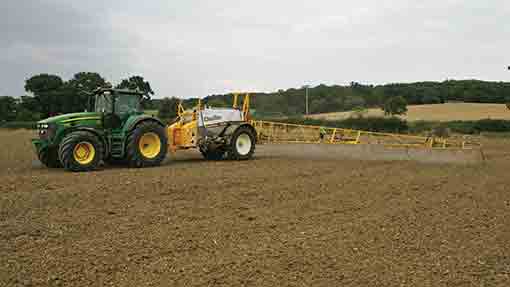Campaign aims to save key oilseed rape herbicides

A pesticide stewardship campaign has been launched to prevent the loss of metazachlor as a pre- and early post-emergence residual herbicide in oilseed rape.
Contained in products such as Makhteshim-Agan’s Sultan and BASF’s Butisan, among others, the active ingredient is a key component of weed-control programmes in what is considered a “cleaning crop” for winter wheat.
The active is one of a group of oilseed rape herbicides in the spotlight after being found in raw water on a regular basis and also includes carbetamide, propyzamide and quinmerac – an active regularly partnered with metazachlor.
See also: Industry united in battle to reduce pesticides in water
With herbicide resistance on the rise in some weed populations, a mixture of active ingredients with alternative modes of action is crucial for maintaining control through growers’ rotations.
A recent Crop Protection Association (CPA) and Agricultural Industry Confederation (AIC) report suggested that losing metazachlor could see oilseed rape yield losses of about 33% from poor broad-leaved weed control.
Further to the losses in rape, it’s estimated that margins in following wheat crops could be slashed by up to 43% due to poor blackgrass control that the key oilseed rape herbicides provide.
The UK has been non-compliant with the European Commission’s Water Framework Directive (WFD) since its implementation in 2000 due the frequency and magnitude of metaldehyde concentrations in raw water.
Metazachlor stewardship guidelines
- Apply using voluntary initiative best practice guidelines
- Use vegetative buffer strips to reduce run-off risk
- Pay attention to soil structure and seed-bed preparation
- Establish OSR before first week of September
- Avoid metazachlor (+quinmerac) use on drained land before end of September
This poses a real challenge for water companies, which must comply with the 0.1ppb limit set for individual active ingredients in drinking water.
However, Defra still believes that trying to implement voluntary measures is the way to reduce these spikes and need to show it is doing so by the next WFD review in 2021.
MAUK’s technical lead Paul Fogg told a recent briefing the clock is ticking for this issue to be addressed and the destiny of metazachlor and other key actives such as quinmerac is in growers’ hands.
“We need to prove that there is a downward trend in the levels of these active ingredients in water, but some are going in the wrong direction,” he added.
Ways to water
Point-source pollution from sprayer filling areas and farmyards remains the largest contributor to pesticide pollution, estimated to be between 40% and 50%. But it is fairly straightforward to address.
Reducing diffuse pollution from run-off and leaching through soils or under-drainage, however, is more complex, particularly with a substance such as metazachlor, which is extremely mobile through the soil.
“Heavy soils with a clay content greater than 35% and under drainage are the highest risk, with cracks and drains providing ‘motorways’ for the product getting into water.
“Metazachlor is predominantly applied in August when we can have some significant rain events when soils are cracked,” said Dr Fogg.
He added that run-off is less of a concern, with the availability of effective solutions such as establishing vegetative buffer strips and not applying the herbicides when soils are at field capacity.
“Heavy, drained soils make up a significant part of the oilseed rape area and must be the focus,” said Dr Fogg.
Cultivations key
BASF’s head of business development and sustainability Rob Gladwin explained that good agronomic practice would help mitigate the risk of the active reaching watercourses from both run-off and leaching.
This includes maintaining soil structure and organic matter, producing fine and consolidated seed-beds and establishing the rape crop by the first week of September.
“Not carrying out unnecessarily deep subsoiling will reduce paths into drains, and avoiding over-cultivation will reduce the risk of capping that increases run-off. Metazachlor shouldn’t be applied after the end of September too,” said Mr Gladwin.
He points out that the EU-wide metazachlor stewardship initiative agreed between BASF and MAUK is trying to provide guidelines and highlight the highest risk areas.
“Growers need to realize they are not only part of the problem, but part of the solution. They need to be proactive and work with their advisers to mitigate the risk,” added Mr Gladwin.
The initiative will be phased in over the next two years and is expected to dovetail with similar initiatives for other key oilseed rape herbicides propyzamide and carbetamide.
Dr Fogg said that once water companies record lower spikes in a wet autumn, when metazachlor use is high, the industry will be able to show that the voluntary initiative is working.
“We will need to take that to Brussels in 2021, as we have no alternatives to replace some of these products and they must be protected,” he added.

